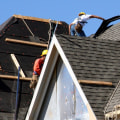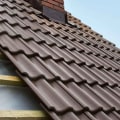It is not always necessary to replace the entire roof. In some cases, only the roof tiles need to be replaced. However, more extensive damage that extends over a larger area of the roof will almost always require replacement. When it comes to roof restoration, the big question is: should you re-roof or have a complete roof replacement? To find out which option is best for you, let's take a look at both.
If your roofer thinks you need a complete roof replacement, you have a couple of options to choose from. Replacing the roof allows any problems hidden under the shingles to be detected and has a longer life span than the cladding. On the other hand, replacing the entire roof requires a great deal of labour to remove the old shingles, prepare the roof for the new installation and install the new shingles, which is more costly. Partial replacement may save you a day, but it will not help the older sections of the roof last longer.
Before deciding to replace shingles, it is important to have a professional inspect your roof to determine if any part of the underlayment or deck is damaged. These repairs can extend the life of an old roof, and can help to bridge the time until it's time to tear off the old roof and replace it with a new one. Most professional roofing contractors do not do half-roof replacements knowing that joining two different sections together is difficult and often ineffective. Therefore, if you see a heavy "tar patch" on your roof, fix it before leaks and interior damage occur, but wait to replace the entire roof.
If the damage is extensive, it is usually a better idea and more cost-effective to replace the entire roof. That way, when the time comes to replace the roof completely, the cost of removing 2 layers can offset any savings you may have made by choosing to re-roof. A shingle that has lifted due to winds may have loosened the sealant and possibly the nail, all of which means replacing the roof. Seeing curled shingles can mean a sign of major problems, such as leaks, which may mean roof replacement. Also, depending on age, your roof may be too brittle or worn to withstand partial replacement.
When to replace your roof depends on several factors, such as wear and tear and age, the quality of the installation and the vulnerability of your home to damage in the future.



